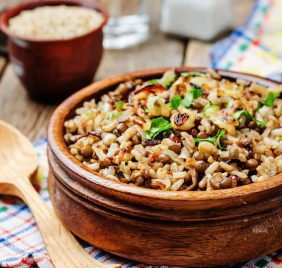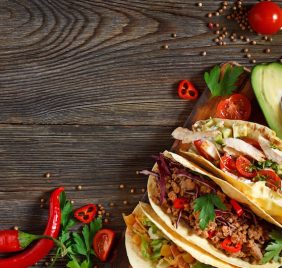By now, we all know that kale is good for you and that fruits, whole grains and other vegetables are the key to a nutritious, healthy diet. But even if your family’s meals are chock full of wholesome ingredients, there may be room for improvement. Plus, you can only have kale so many days a week, right?
We’re not suggesting you ditch your old standbys, but cranking out the same dishes night after night can get a little dull. That’s why we’ve rounded up some clever, nutritious ingredient swaps that aren’t just tasty—they’ll also take your family’s meals from good to great.
Cherries vs. Strawberries
“Cherries are an often under-appreciated fruit,” says Partnership for a Healthier America’s Amaris Bradley, MPH, RD.
They are loaded with antioxidants, Bradley said, which is how they get their bright-red color. Some recent research has also found that tart cherries may help you get a good night’s sleep because they contain melatonin. Here are cherry recipes for breakfast, lunch and dinner from Health.com.
Baramundi vs. Sea Bass
Also known as the “sustainable” sea bass, Baramundi from Australia has the same sweet flavor and white flaky texture as sea bass, but it’s eco-friendly. Barramundi also has omega-3 levels that rival wild Coho Salmon, which is unheard of for a mild white fish. Try this clever “Fish in a Bag” recipe from Jamie Oliver to really bring out the fish’s flavor without adding a lot of calories.
Watercress vs. Kale
According to “Eat This, Not That!” watercress is the top dog when it comes to greens. Known for its mild taste and delicate leaves, gram for gram, watercress contains four times more beta-carotene than an apple, and a whopping 238 percent of your daily recommended dose of vitamin K per 100 grams. The Centers for Disease Control found that out of 41 fruits and vegetables, watercress contained the most antioxidants and ranked at the top of the list measuring 17 different nutrients. So yeah, get some watercress in your life with one of these lunch, dinner, or picnic-ready salads.
Quinoa vs. Bulgur
We all know quinoa is healthful, but bulgur is another fine choice, and arguably healthier, depending on your nutrient needs, Bradley said. Gram for gram, there’s just a 1-gram protein difference compared to quinoa; bulgur also has fewer calories, carbs, and is higher in fiber.
“It’s also incredibly versatile: cook it as a pilaf just like rice, add to salads, or cook as a hot breakfast cereal,” said Bradley.
Try this blueberry and feta bulgur salad with mint dressing.
Greek yogurt vs. Kefir
Kefir is the rising star of the dairy aisle. This tart, fermented drinking-style yogurt “has far more probiotic strains and even beneficial yeast (yup, that’s a thing) than regular or Greek yogurt — both of which bolster the immune system and promote a healthy gut,” Bradley said. In general, kefir provides more calcium, and in certain brands, is a good source of fiber. Some studies have also shown Kefir is more easily digested by those with lactose-intolerance compared to regular yogurt, and you can eat it like yogurt over fresh fruit, in smoothies, or as an ingredient in popsicles or salad dressings.
What are some of your favorite food swaps? Tell us in the comments!












